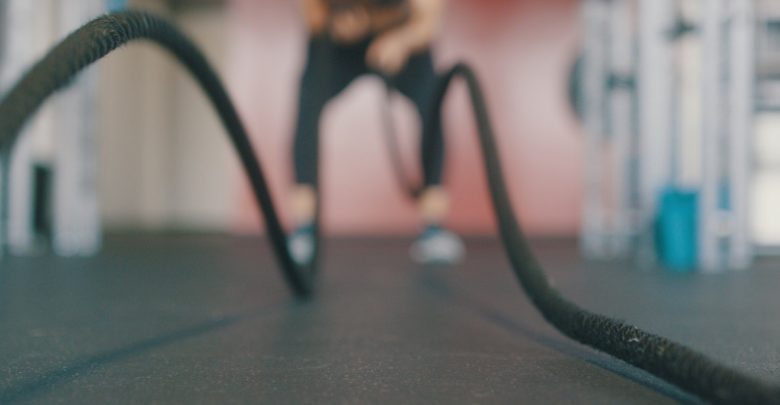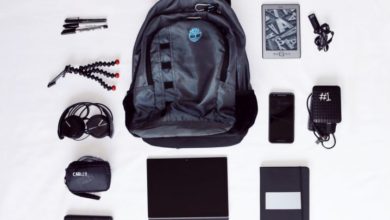Six tips to help young athletes prepare for upcoming season

Just because the weather outside is getting colder, it doesn’t always mean that athletes are taking time away from their sport.
In fact, for many East Central Illinois athletes, the cold months are a time to prepare their body for the grind of spring, summer and fall seasons.
Adam Tarr, Certified Athletic Trainer at Carle Sports Medicine said the off-season training is not only a key component in the success of an athlete or a team, but even more so in preventing injuries that typically happen during the onset of practice.
“That maintenance of strength and flexibility, that’s how we can stay away from some of those injuries,” Tarr said. “It’s the kids who jump right in to a certain level of exercise that end up finding themselves with an overuse injury or some kind of injury.”
Tarr said athletes who spend time in the off-season working on balance, agility, flexibility, power and strength have an easier time getting into the swing of things as their sport begins.
While the time before or after practice is easy to overlook, Tarr also said it’s equally important, whether during training or in-season, to warm up or cool down the body before and after exercise.
“Getting the body temperature elevated to a point where it’s ready to go is a big deal. Then cooling off and getting stretched out is a big deal to stay away from these injuries.”
No matter how much an athlete prepares their body, Tarr said there are additional measures that can be taken to prevent some common injuries.
Playing a variety of sports throughout the year
“We see a lot of injury in kids who do one sport,” Tarr said. “Back in the day, (kids) used to climb trees, play baseball after school, play outside more, ride bikes. There was just a lot of activity that happened outside.
“To go from having that to now doing one sport year round makes it really challenging because our bodies aren’t built for that.
“We aren’t getting that base level of strength and flexibility (whereas) maybe kids in the past who played all the time did a little bit more.”
Tarr said athletes who focus on one sport often battle strength and flexibility deficits that often lead to injury.
“We just see positive things when we change up sports and movements from season to season.
“Using those different sets of movements is what’s valuable. We see differences in injury trends we do have those changes.”
Getting enough rest
With many athletes engaged in multiple sports or playing a sport that is accessible year-round, athletes today often don’t give their body the rest it needs.
Tarr recommends taking a couple weeks time in between seasons to give the body time to recoup from repeated movements that come with any activity.
Wearing the proper gear
Tarr said athletes in contact sports should always wear proper athletic gear when practicing or in games. Part of the challenge, he said, is making sure that the gear fits correctly. Protective gear that does not properly fit can lead to injuries, just as not wearing the gear can.
Tarr said Carle Sports Medicine also sees a lot of lower leg injuries because athletes are not wearing the proper shoes.
“Sometimes cleats or spikes or the things that we will use do not support our feet really well or they do not fit right,” he said.
Providers at Carle Sports Medicine often encourage athletes to visit local shoes stores that are well-versed on the product they sell.
He encourages athletes to visit Carle Sports Medicine’s free injury evaluation clinic where providers can advise on sport and athlete specific shoewear.![]()
Training variation
Alongside playing multiple sports, Tarr encourages athletes, especially those who are runners, to vary their conditioning surfaces as they train.
“Our track and field and cross country coaches do a great job of trying to change up the surfaces,” he said. “They know that they are putting a lot of mileage on their athletes.
“It is strenuous.”
While it is easy to find a stretch of road to run on, Tarr said the level of strain on a runners lower leg is something that commonly leads to a breakdown and injury.
Tarr suggests adding variation to the running routine to include grass and soft surfaces.
Set training goals
Just as teams set goals during the season, Tarr encourages athletes to set goals for the off-season.
Whether an athlete is an adolescent, looking to improve balance and flexibility, or a varsity athlete looking to improve power and strength, Tarr said goals should be communicated and accessed at appropriate times throughout the training program.
Be there for your athlete
Training will often push an athlete beyond what they believe they can physically do. Alongside giving children the opportunity to become an athlete, Tarr said it’s equally important to be there for the athlete and team during all aspects of a sport.
“It can be discouraging doing some of this training,” he said “It may not be going as well as they would hope, maybe their performance isn’t where they would like it to be.
Just be a positive ear for (your) kid.”
Tarr said encouraging qualities like good behavior and sportsmanship will go a long way.
________
When an athlete complains of a sore area on their body, it is often hard for parents to know where to go or what to do.
Tarr said if an athlete has any sort of deformity, such as a broken bone, or if there is a life-threatening injury, parents should take the athlete to the emergency room.
In other cases, some injuries can be treated at home and others need to be seen.
“If you have a sharp, stabbing, burning pain, if you’re having severe pain, get in and get seen,” he said.
While muscle soreness will often go away in time, Tarr said to look for deficiencies when deciding if the injury needs to be seen by a physician.
“It’s when those injuries start to reveal some deficits: strength deficits, range of motion deficits, those are the things we need to get checked out to determine what we do next because more than likely you have some kind of sports injury.”
With injuries that need to be addressed quickly, but not immediately, Tarr recommends convenient care. For aches and pains that may be on the “back burner,” Tarr said athletes can go to their primary care physician, who can refer out to other specialties, including sports medicine providers.
Tarr said that using ice immediately after an injury is important for the first 72 hours. When an athlete has a sprain, for example, bleeding happens inside the injury. Ice will help slow that bleeding down.
Heat, on the other hand, should be used later in the rehabilitation process.
“I would wait 72 hours for sure, maybe longer,” Tarr said.
Tarr compared the use of heat to the warm-up routine that should be completed before activity.
“Use heat to help get the muscle loosened and have blood flow to those muscles to get them moving a little easier,” he said. “I would do that before activity, not after.”
Carle Sports Medicine offers a free injury evaluation clinic, located at 2300 S. First, Champaign, during walk in hours. Injury evaluation is open to athletes of all ages and you don’t have to be a Carle patient. Providers will evaluate the sports injury and offer suggestions including: rehabilitation exercises, physician referrals when needed, return-to-play recommendations, and injury prevention tips.
The clinic is open Monday – Thursday: 6:30 – 8:30 a.m. and 4 – 6 p.m. and Friday: 6:30 – 8:30 a.m.



